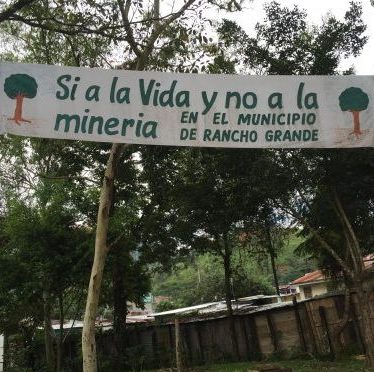
Region: Central America
Language: English
Year: 2016
Source: Contribution for manual
Author: Lori Hanson (PHM Canada) for the Guardians of Yaoska, with assistance from the Humboldt Centre in Managua
Summary: This is the story of the municipality of Rancho Grande and its conflict with Nicaragua’s largest gold mining investor and exporter, Vancouver-based B2Gold, wherein campesinos (farmers) became “land defenders” fighting government authorities and the Canadian company. They won an important victory in October 2015 when the government gave a “declaration of non-viability” that will keep open pit gold mining out of the area. Strategies of the company/state (described by local activists) included: discrediting and criminalization, through community pressure, infiltration, buy-outs involving local and national politicians, state institutions, the media, the police and the army; threats (by phone, visits from state security apparatus, etc.); intransigence from local authorities; restrictions on freedom of movement. Actions of organized resistance by the land defenders included: a semester long school strike involving the majority of the rural schools in the area (i.e. when parents learned that the mining company would be allowed to give “environmental education” directly every week to the children they kept their kids at home for a semester, a strategy that garnered more attention that protest marches); numerous meetings and protests locally and nationally; continuous support of the local priests and Catholic bishop of Matagalpa. Organising strategies: building awareness (door-to-door visits, community radio, organized trips to mining communities, videos about mining effects on the quality of water and forests in mining communities); getting organized (starting with children at catechism painting pictures on banners and going on town marches); having priests provide space and guidance to leaders, creating and maintaining a non-partisan, multi-faith space for the organization; becoming active/public; all while recognizing the importance of being connected with outside organizations (NGOs in local and national networks and research organizations), and staying vocal (including finding media that publicize the resistance, locally, nationally and internationally). The movement is multi-faith, multi-party (non-affiliated) and has members that are all ages and genders. It is guided by the ideas behind peaceful resistance, centuries old agricultural cultural tradition, and faith. The local Catholic priests were both catalysts and an integral part of the movement since the beginning (the opposite in other areas of the country).
For more information on this experience, please write to Lori Hanson at [email protected].
Key practices: advocacy, campaigns, communication; participation, community action; networking, alliances and cooperation
Read the full report here

